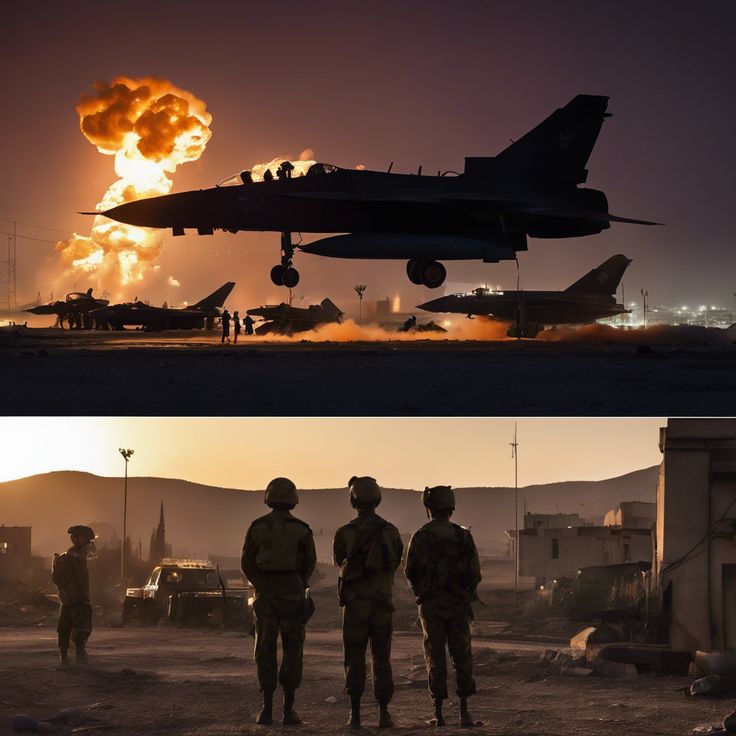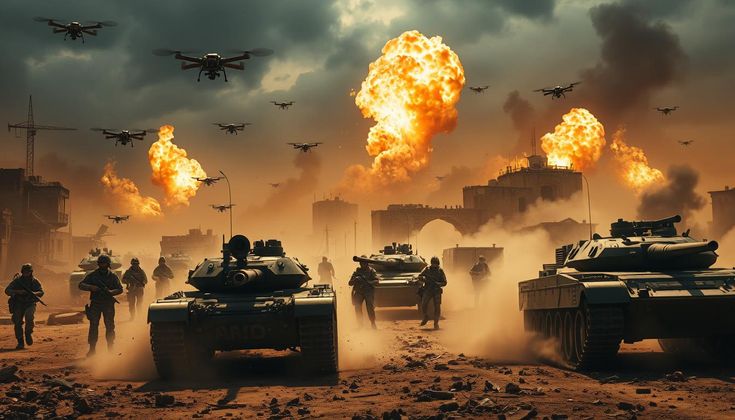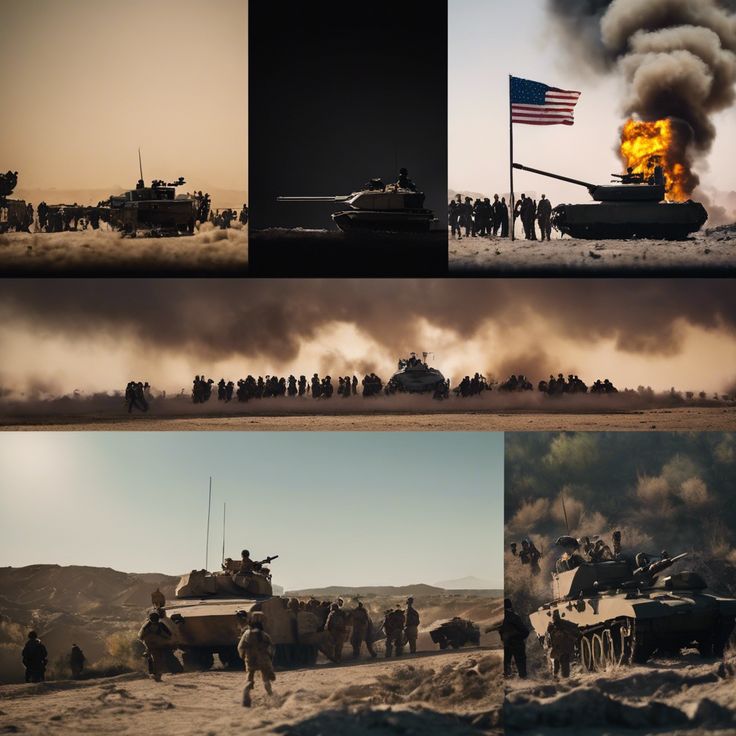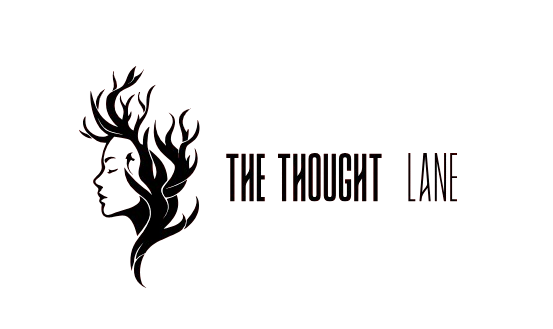The America attack on Iran has sent shockwaves across the globe, plunging the Middle East into turmoil and intensifying fears of a broader regional war. As the world closely watches the fallout of this high-stakes confrontation, nations scramble to respond, alliances shift, and the world order begins to tremble. This article dives deep into the background, the attack itself, the global reaction, and the long-term consequences of one of the most critical military escalations of the 21st century.
Origins of the America Attack on Iran
Understanding the America attack on Iran requires a grasp of the decades-long tension between the two nations. Since the 1979 Iranian Revolution, relations have been fraught with mistrust, proxy wars, cyber operations, and diplomatic standoffs.
The Build-Up: Years of Sanctions and Proxy Conflicts
The U.S. has imposed numerous sanctions on Iran, aimed at curbing its nuclear program and weakening its economy. In response, Iran expanded its regional influence through proxy groups in Iraq, Syria, Yemen, and Lebanon. These indirect conflicts escalated tension and paved the path toward the eventual America attack on Iran.

The Flashpoint: Drone Attacks and Oil Tanker Incidents
The final straw came when Iran was accused of attacking oil tankers in the Strait of Hormuz and downing a U.S. surveillance drone. Despite initial restraint, the U.S. administration promised a severe response. Tensions reached a boiling point, setting the stage for the military escalation.
The America Attack on Iran Unfolds
The Night of the Strike
On a tense night, U.S. warplanes launched a series of coordinated strikes on multiple Iranian military installations, radar systems, and strategic assets. According to Pentagon officials, the America attack on Iran was a preemptive move to “neutralize imminent threats” posed by Iranian missile systems.
What Was Targeted?
- Iranian Revolutionary Guard Corps (IRGC) bases
- Ballistic missile sites
- Air defense systems near Tehran and Isfahan
- Military command centers
Iranian state media reported dozens of deaths, including high-ranking military officials. Civilians in nearby towns reported power outages, panic, and chaos.
The Human Cost of War
Early reports indicate over 200 Iranian casualties, with hospitals overwhelmed. In the U.S., the attack sparked nationwide protests against military escalation, with many fearing a repeat of the Iraq war scenario. The America attack on Iran quickly became the subject of fierce debate in Congress and media.
Iran’s Immediate Retaliation
Missile Barrage on U.S. Bases in Iraq
Just hours after the America attack on Iran, Tehran retaliated with a barrage of ballistic missiles targeting U.S. bases in Iraq. While the U.S. reported no fatalities, several soldiers suffered traumatic brain injuries. Iran declared the operation a “legitimate act of self-defense.”
Cyberwarfare Escalates
Iran also launched sophisticated cyberattacks targeting U.S. infrastructure, including water treatment plants and power grids. The digital battlefield became just as critical as the physical one.
Global Reactions to the America Attack on Iran
UN and NATO Response
The United Nations called for immediate de-escalation, warning that the America attack on Iran violated international law. NATO members were divided—some supported the U.S., while others urged restraint.
Russia and China Condemn U.S. Actions
Russia and China, long-time allies of Iran, condemned the strike. Moscow called it “an act of aggression that endangers global peace,” while Beijing warned that “unilateral military actions could trigger uncontrollable consequences.”
Economic Shockwaves After the America Attack on Iran
Oil Prices Surge
Global oil prices soared by 30% overnight. The Strait of Hormuz, a vital oil chokepoint, was temporarily blocked, disrupting global supply chains.
Global Stock Market Plunge
Markets in Asia, Europe, and the U.S. experienced their steepest declines since the pandemic. Defense stocks surged, while airline and tech sectors faced heavy losses.
U.S. Dollar Weakens
Amid the chaos, the dollar lost ground to major currencies. Investors turned to gold and cryptocurrencies as safe havens.
Political Fallout in the United States
Congressional Backlash
Many lawmakers criticized the president for launching the America attack on Iran without Congressional approval. Emergency hearings were held to debate war powers and the need for future checks on executive military authority.
Public Opinion Divided
Polls showed a sharply divided American public. While some supported the strike as necessary, others viewed it as reckless warmongering. Anti-war protests erupted in major cities, from New York to Los Angeles.
The Role of Media and Misinformation
Social Media Chaos
False reports and conspiracy theories spread rapidly across platforms. Many falsely claimed nuclear strikes or World War III was underway. Social media platforms scrambled to flag misinformation, but the damage was done. https://www.cnn.com/world/live-news/israel-iran-conflict-06-21-25-intl-hnk
Journalistic Coverage Under Fire
Some mainstream outlets were accused of spreading pro-war narratives, while others were labeled as pro-Iranian. The America attack on Iran became a media battlefield, influencing perceptions globally.

Regional Fallout and Middle East Instability
Iraq Caught in the Crossfire
Iraq, home to both U.S. bases and Iranian-backed militias, found itself in the middle of the conflict. Bombings, protests, and political instability surged as the country struggled to stay neutral.
Israel, Saudi Arabia, and the Gulf States React
Israel put its military on high alert, fearing Iranian retaliation. Saudi Arabia offered logistical support to U.S. forces, further angering Tehran. Gulf nations braced for fallout, fearing missile attacks on oil facilities.
Long-Term Consequences of the America Attack on Iran
Diplomatic Breakdown
All remaining communication channels between Washington and Tehran collapsed. The nuclear deal was declared void. Iran resumed uranium enrichment at full speed.
Military Escalation and Arms Race
Both countries increased defense spending. Iran purchased missile systems from Russia, while the U.S. deployed thousands of troops to the region. The America attack on Iran kickstarted a new arms race.
Can Peace Be Restored After the America Attack on Iran?
International Mediation Efforts
Countries like Switzerland, Qatar, and Oman offered to mediate. However, mutual distrust made negotiations difficult. Any peace effort would require months, if not years, of groundwork.
Potential for a New Cold War
Geopolitical analysts suggest that the America attack on Iran may lead to a new Cold War scenario, with global blocs forming around U.S. and Iranian interests. This could destabilize regions far beyond the Middle East.
Public Voices and Human Stories
Iranian Civilians Speak Out
“I was holding my child when the bombs fell. The whole sky turned red,” said a mother in Isfahan. Stories like hers circulated on international platforms, showing the human cost of military aggression.
Voices from the U.S. Military
Soldiers deployed after the America attack on Iran shared mixed feelings. “We follow orders, but nobody wants war,” said one marine stationed in the Gulf.
Lessons from the America Attack on Iran
Diplomacy Must Prevail
Many experts now stress that military action should never replace dialogue. The America attack on Iran showed how easily political miscalculations can lead to catastrophic outcomes.
The Power of Preparedness
Nations must invest in cybersecurity, diplomacy, and intelligence gathering to avoid surprises. The incident served as a wake-up call to governments worldwide.

Conclusion
The America attack on Iran marks a turning point in modern global politics. It exposed the fragility of international peace, the volatility of Middle Eastern dynamics, and the immense cost of unchecked militarism. Whether this conflict ends in further destruction or paves the way for renewed diplomacy remains uncertain. What is clear, however, is that the world will never be the same.



